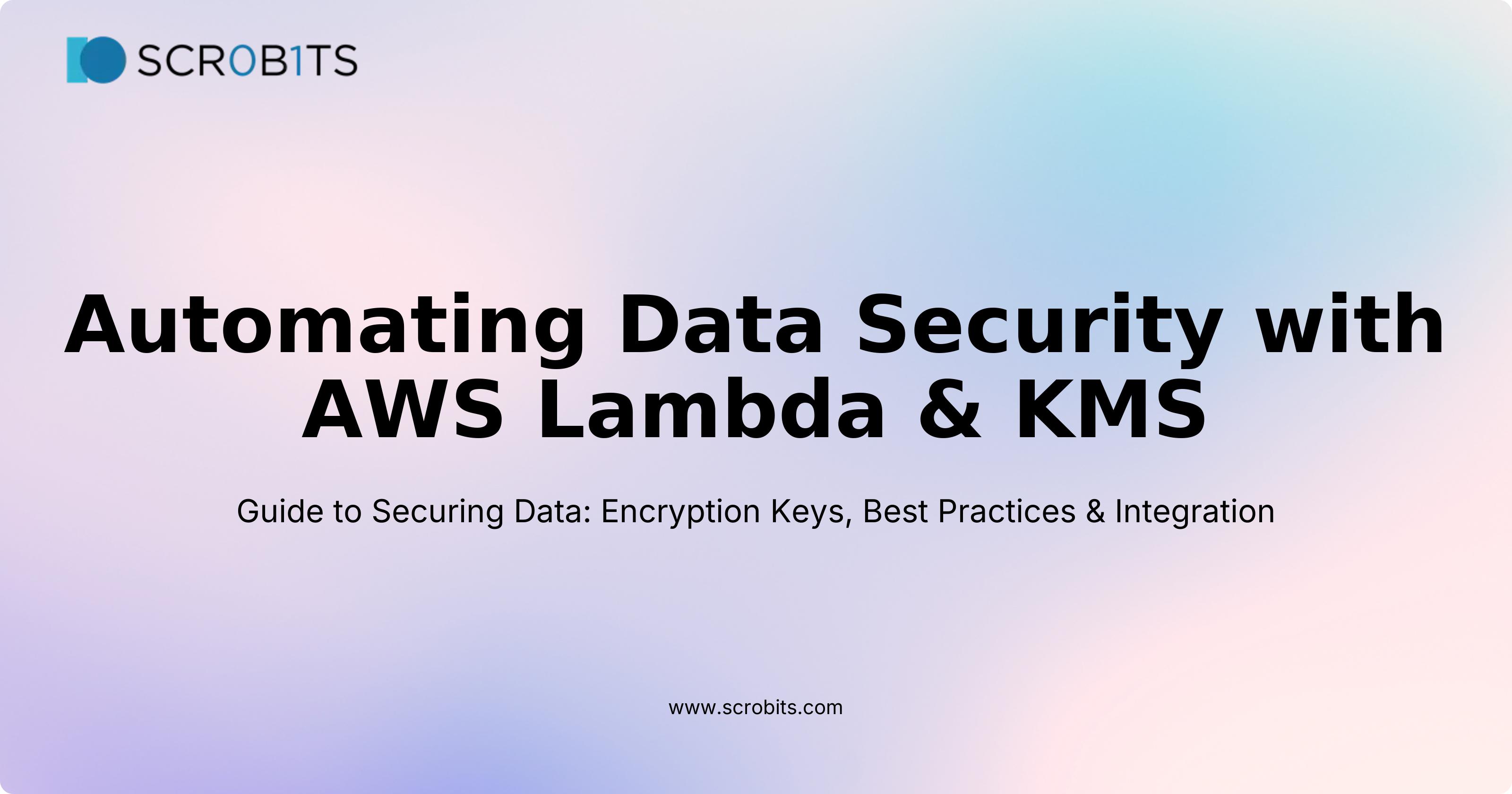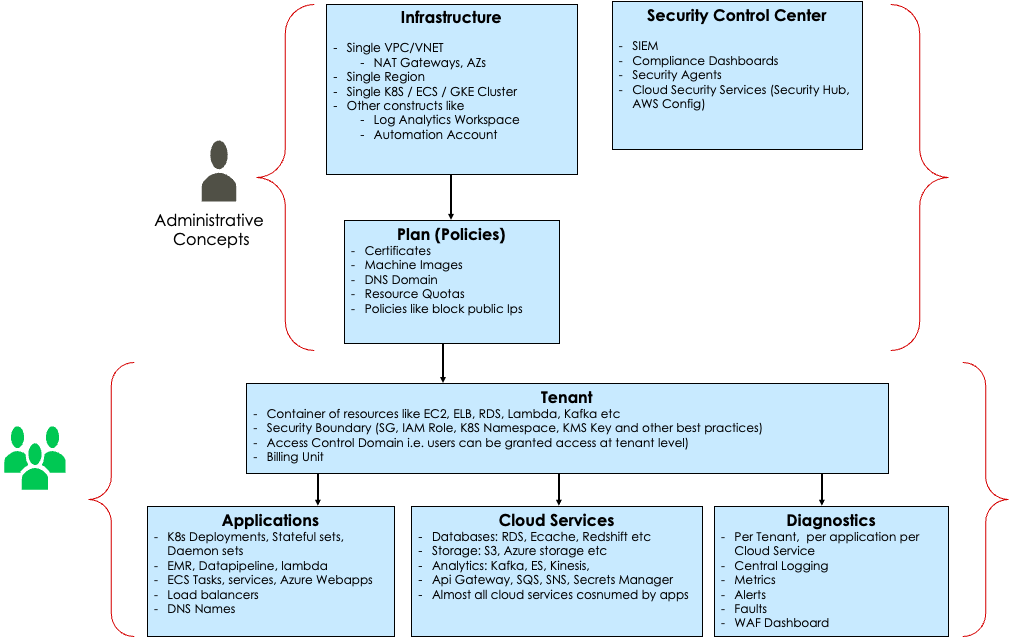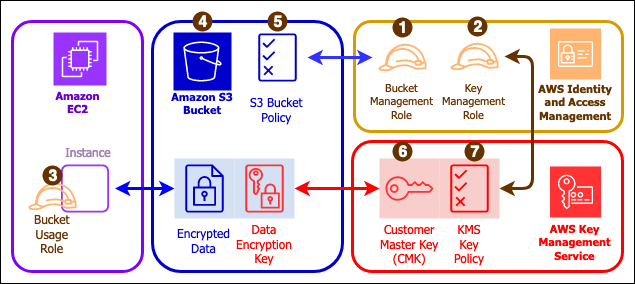Automating Data Security with AWS Lambda & KMS
 Arpit Shrivastava
Arpit Shrivastava
In today’s fast-paced tech world, getting a grasp on AWS Lambda and KMS is like unlocking new opportunities, especially for keeping your data safe.
Cyber threats are bigger than ever, which means securing your data isn't just optional—it's crucial.
Importance of Data Security
I often hear the question, "Is data automatically encrypted in AWS?" Thankfully, the answer is comforting.
AWS is serious about data safety. It uses AWS KMS to encrypt your data.
With AWS KMS, your personal info gets automatically encrypted using AWS-owned keys. You don't have to manage these keys or even see them.
AWS takes care of everything, letting you focus on what's important: running your business.
These AWS keys work like an invisible shield. Think of them as a digital vault.
They automatically secure your data. There’s no need for manual work, which is a huge win for any business wanting to boost security without extra hassles.

Avoiding data breaches is smart business. AWS automates the tough security bits, so you can relax knowing your sensitive info is safe, without having to dive into complex encryption processes.
With AWS, you get peace of mind knowing your data is secure, all without extra effort on your end.
It’s a seamless way to enhance your business's security posture.# Automating Data Security with AWS Lambda & KMS
Main Point 1: Implementation of Data Encryption with AWS KMS
In our digital world today, keeping data safe is a must-do.
Using AWS Key Management Service (KMS) can really boost your security game.
AWS KMS isn't just another tool in the cloud; it's a real powerhouse when securing your data and automating tasks.
AWS KMS Policies Configuration
Setting up AWS KMS policies is crucial. Why, you ask? It ensures only the right people get to see your encrypted data. And here's the cool part: AWS KMS works like a charm with other AWS services, even your Lambda functions.
Think of a Lambda function’s security group as more than just a label. It's like the name tag it wears at a cloud party.
You can reference it when dealing with EC2 security groups.
Just picture your Lambda function making a GET request to an EC2 instance inside a private part of your VPC.
That's seamless integration giving you extra security layers without stress.
Security groups are like those diligent friends who control who comes in and goes out. They're the quiet gatekeepers of your cloud space.
Starting with two well-thought-out security groups can help you create a strong policy. This policy not only guards but also simplifies these interactions.
Picasso once said, "Action is the foundational key to all success." The same goes for configuring AWS KMS policies.
By doing this, you're building the foundation for a safe and automated environment. AWS KMS gives you the flexibility to craft encryption policies that fit your organization's needs perfectly.
Whether it's setting detailed IAM permissions or configuring encryption logging alarms, personalizing these policies keeps you ahead in security.
As our digital footprint grows, keeping your data safe is vital.
AWS KMS and Lambda offer a proactive way to enhance security and smoothen your operations.
Dive into AWS’s documentation and tap into the amazing community and resources so you can fully leverage these robust tools.
*
Integrating AWS Lambda with KMS for Automated Security
In today’s fast-paced digital world, keeping data secure without losing out on speed and efficiency is key.
AWS Lambda, when paired with AWS Key Management Service (KMS), makes this balancing act a breeze.
Here’s how this powerful combo works and why it’s better than other cloud encryption options.
Comparing AWS KMS with Other Cloud Encryption Services
When it comes to cloud encryption, AWS KMS shines because of its smooth key management automation.
Some other services can be tricky to set up or don’t offer much in terms of automation. AWS KMS is designed to handle these tasks with ease.
I remember working on a project where we had to encrypt data both at rest and in transit.
Thanks to AWS KMS, we didn't waste much time setting up key management. It integrates nicely with other AWS services like Lambda, making our security tasks simpler.
This cut down a lot of our operational hassles. Checking out other options usually meant dealing with extra steps and sometimes even having to use third-party tools, which just added to the workload.
AWS KMS has a neat feature with AWS Identity and Access Management (IAM). It lets you control who can access specific keys.
This makes it easy to uphold strict security standards, which isn't always straightforward with other services.
Another great thing? AWS KMS logs every use of the encryption keys.
This tracking was crucial for us to spot and address any unusual activity quickly.
Other services? They might need more configurations or external logging solutions to offer the same level of tracking.

Plus, AWS KMS takes care of many tasks automatically, like rotating encryption keys. This is a big win for maintaining security standards.
It also frees up time to focus on other key areas of our applications.
Which AWS service can be used for automated testing of Lambda functions?
When setting up these integrations, testing automatically becomes super important, especially with sensitive data.
For local testing of Lambda functions before launching, AWS provides the AWS Serverless Application Model (SAM).
By using the sam local start-lambda command, you can create a local endpoint that acts just like the Lambda invoke endpoint.
This way, you can safely test your integration steps.
Using these testing methods, you can ensure your Lambda functions do their job securely and properly once deployed.
I recall a project where these tests pinpointed minor errors, saving a ton of debugging time once those functions were live.
Conclusion
Using AWS Lambda along with KMS can really transform how you handle data security.
These tools provide a seamless and scalable way to protect sensitive information.
You don't need to worry about constant manual oversight.
It's almost like they were made for each other, but remember, there are a few key things to think about for future deployments.
Considerations for Future Deployment
Make sure your deployment strategy follows best practices. Here are three integrations to remember:
Monitoring Concurrency: Always keep an eye on your AWS Lambda functions for concurrency limits.
This helps maintain performance and avoids frustrating throttling. Also, watch your package size and dependencies.
Optimizing these can prevent future headaches.
Optimizing Memory Size and Language Runtime: Ensure your memory allocation and language runtime are optimized for peak performance.
This saves costs and significantly boosts function efficiency. In my experience, adjusting these details has made things much smoother.
VPC Integration: Deciding when to integrate a Virtual Private Cloud (VPC) into your Lambda function can significantly enhance your security. T
his gives you more control over your workflows.
Don't forget to keep tabs on the AWS KMS pricing comparison and compliance standards.
This will help maintain financial efficiency while ensuring security is top-notch.
It’s amazing how these simple configurations can make a substantial difference.
As you plan your next steps, see how these elements fit within your current architecture. They might just be the key to a more resilient system.
Let’s dive into how AWS Lambda and AWS Key Management Service (KMS) fit neatly into broader security strategies.
When it comes to cloud security, it's not just a nice-to-have; it's essential. It's what protects vital data and strengthens a company’s resilience.
AWS Lambda and Automation Use Cases
Ever thought about how AWS Lambda could streamline your security protocols? Imagine not needing to manually encrypt data every time—Lambda takes care of it for you.
The moment data gets uploaded to an S3 bucket, it's encrypted automatically. This kind of automation frees you from repetitive tasks and lets you focus on more strategic plans.
Curious about the possibilities? Our related article on AWS Lambda automation use cases can broaden your view.
AWS KMS Key Rotation Strategies
If you work in data management, you know that regularly rotating encryption keys is crucial. AWS KMS does this effortlessly, allowing for automatic key rotation every year.
It’s like having a silent guardian constantly ensuring your data stays protected. Systems that do this show a commitment to data safety.
For a deeper dive into this, check out our blog post about AWS KMS key rotation strategies.
Configuring AWS Lambda Security Policies
Having the right tools is one thing; knowing how to use them is another.
Configuring secure policies in AWS Lambda gives you the best of both worlds: flexibility and protection.
I remember the moment I set up my first role-based access policy; it was like a eureka moment for me.
If you're intrigued, our guide on configuring AWS Lambda security policies is definitely worth a look.
Comparison of Cloud Encryption Services
AWS KMS has some stiff competition.
When compared to other cloud encryption services, like Google Cloud’s Key Management, you'll see how it stands out.
It’s akin to comparing a diamond with sapphires—both are precious, yet each has unique qualities.
Get the full comparison in our comparison of cloud encryption services including AWS KMS.
Reflecting on automation and security, what amazes me is how AWS makes tackling complex security issues less daunting.
This ease of use and power helps organizations stay ahead in the fast-paced digital world.
References
Subscribe to my newsletter
Read articles from Arpit Shrivastava directly inside your inbox. Subscribe to the newsletter, and don't miss out.
Written by

Arpit Shrivastava
Arpit Shrivastava
I'm Arpit, Co-Founder of ScroBits. I love talking about IoT, SaaS and Cloud DevOps. We make IT outsourcing fun and effective with our MERN stack expertise. When not in the tech world, I enjoy plogging, mountaineering, and working out. Ready to transform your business? Let's chat and make tech magic happen.


